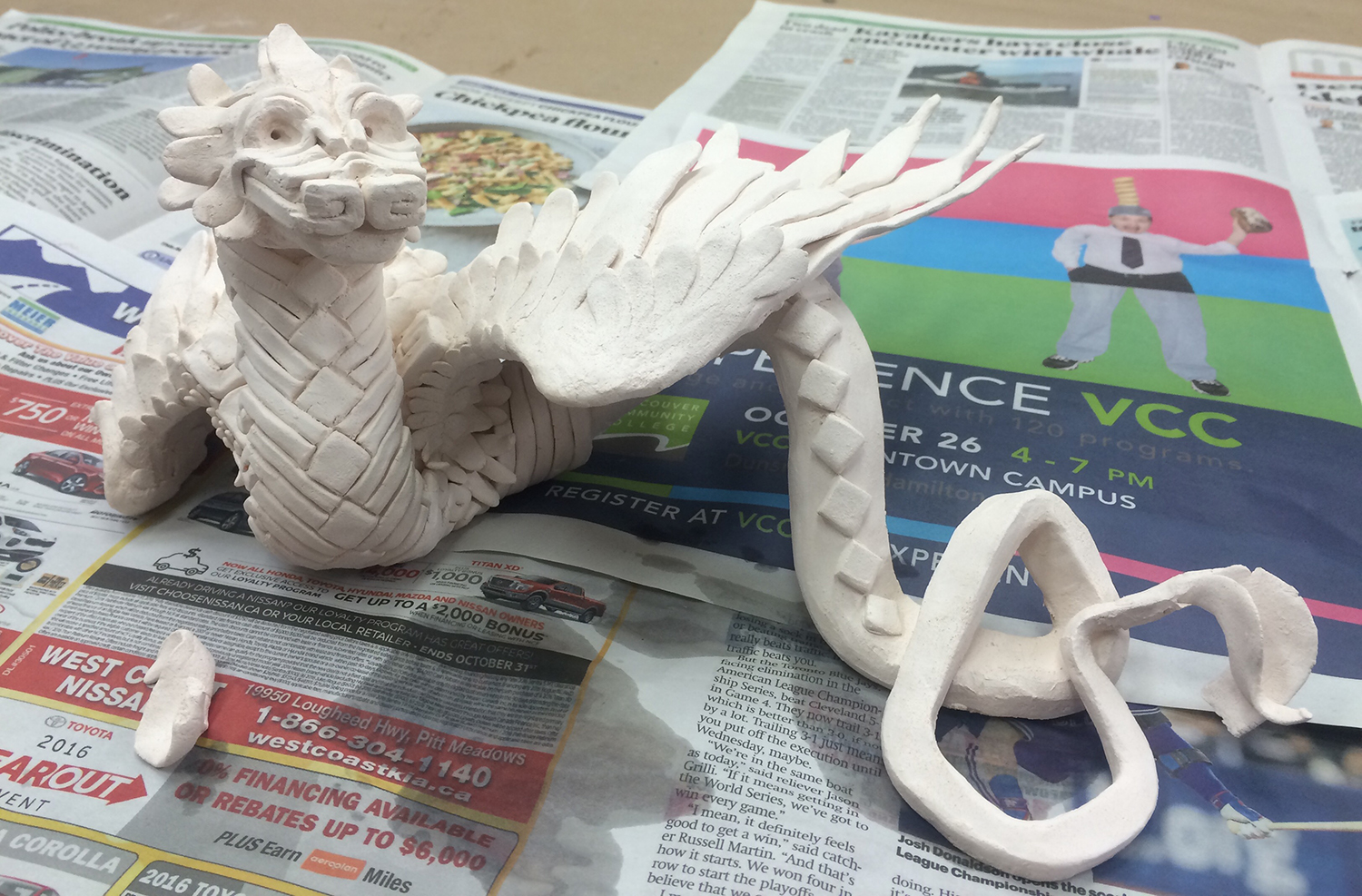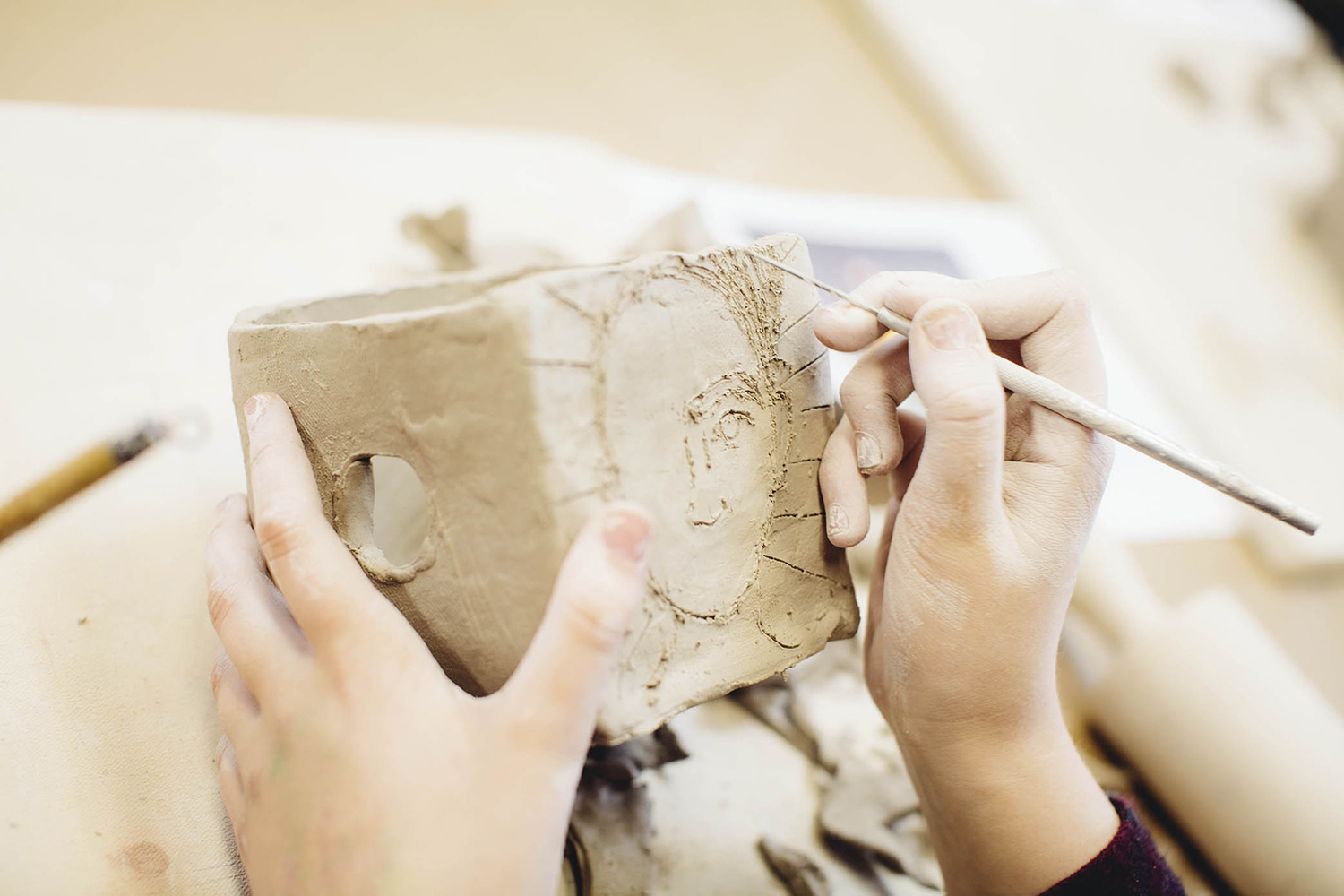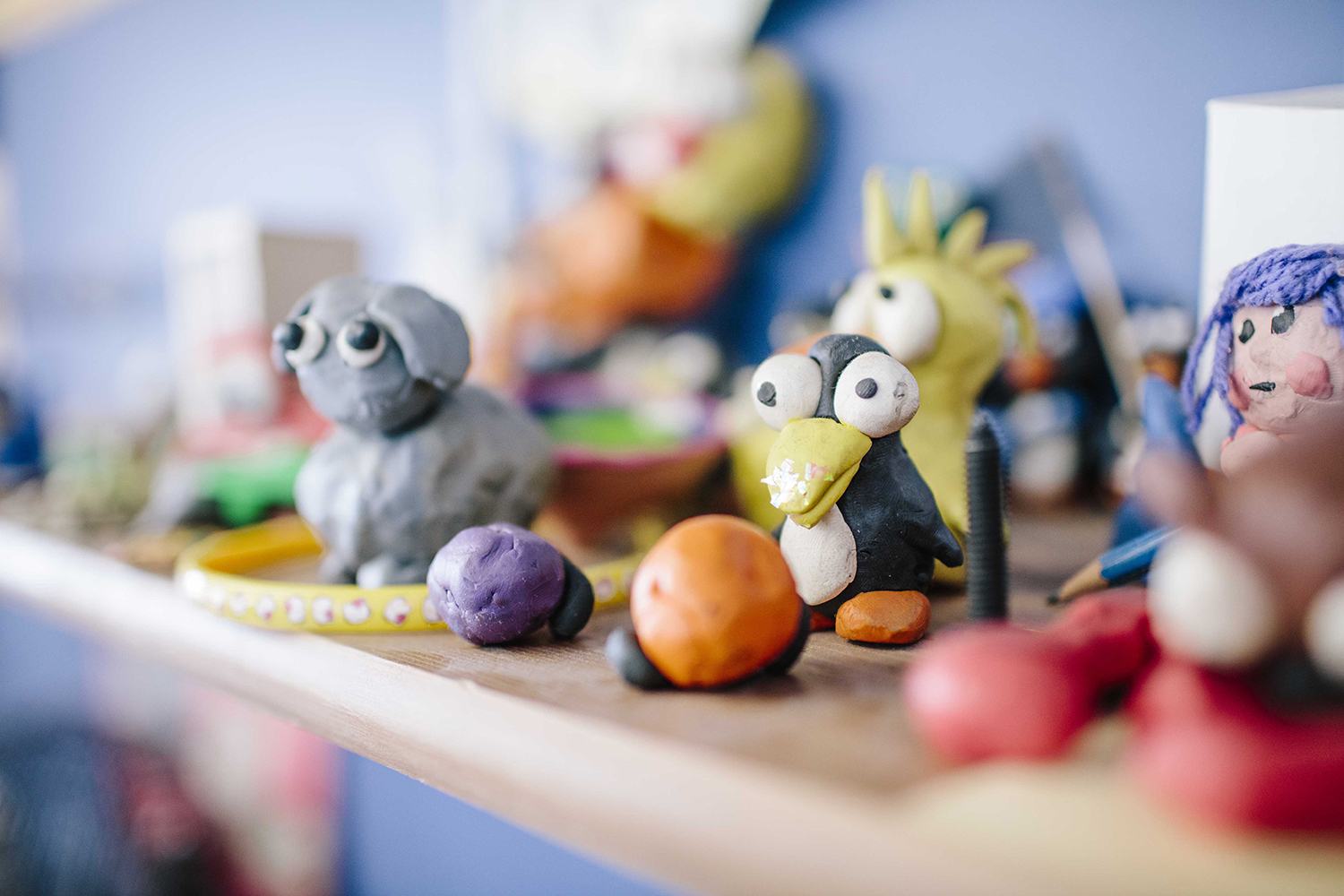
We’ve been teaching Clay Sculpture at Arts Umbrella for decades. It’s always been one of our most popular classes, and it’s no surprise why—the tactile art form helps children build fine motor skills, while encouraging creative thinking in three dimensions. We get a lot of questions about the different types of clay, so we created a handy guide to help you out.
We’re using the term “clay” here to encompass both ceramic clay—porcelain, stoneware, and earthenware—and different types of clay suitable for home, such as modelling clay, plasticine, and salt or cornstarch dough.
Dough Clay
This type of modelling clay can be made at home and is very inexpensive. Made from ingredients found in your pantry—flour, cornstarch, cream of tartar, oil, water, and food colouring—making the clay can be just as fun an activity as working with it. Dough clays are meant to be re-used, but they do dry up when left up, so seal them in airtight containers between art-making sessions.
You can easily find recipes for dough clay online. Some call for air-drying, while others require a bake in the oven. No matter what type of dough clay you choose to make, they can all be painted at home as well. If you’re feeling adventurous, break out the glitter, stamps, and markers as well. Want to create something with texture? Press a piece of lace, a potato masher, or a plant into your soft dough before baking. The sky’s the limit!

Ceramic Clays
The three major types of ceramic clay are earthenware, stoneware, and porcelain. All of them must be fired at very high temperatures in a kiln to remove water content, making the hard final product hold its shape. To increase workability and plasticity, you can add different ingredients to the clay body, but it’s not recommended to mix different temperatures of clay together, as this could cause problems when firing.
- Earthenware clay is sticky and elastic, and commonly appears reddish in colour due to its iron and other mineral content. Fire in a kiln between 950 and 1100°C.
- Stoneware clay is more plastic. It its raw form, this type of clay typically appears grey when moist, but fires to a buff white, medium gray, or brown. The final colour can be manipulated by controlling the firing temperature. Fire between 1200 and 1300°C.
- Porcelain clay is known for its mineral purity, resulting in very light colours after firing (light grey to bright white). The clay mineral itself if also known as kaolin. Fire at 1400°.
Polymer Clays
Made from the polymer polyvinyl chlorides (PVC), this type of modelling clay hardens at temperatures reached in a conventional oven. This makes it ideal for arts and crafts at home. Workable and plastic, polymer clays generally don’t shrink when cured in the oven. You can find many polymer clays at your local art supply store.

Oil-based Clays
Also known as plasticine, oil-based clays are made from oil, wax, and clay minerals. The oil content helps prevent drying, making plasticine an ideal candidate for model-making in animation. While oil-based clays change malleability at different temperatures—you can even melt them to pour into a mold—they cannot be fired and hardened.